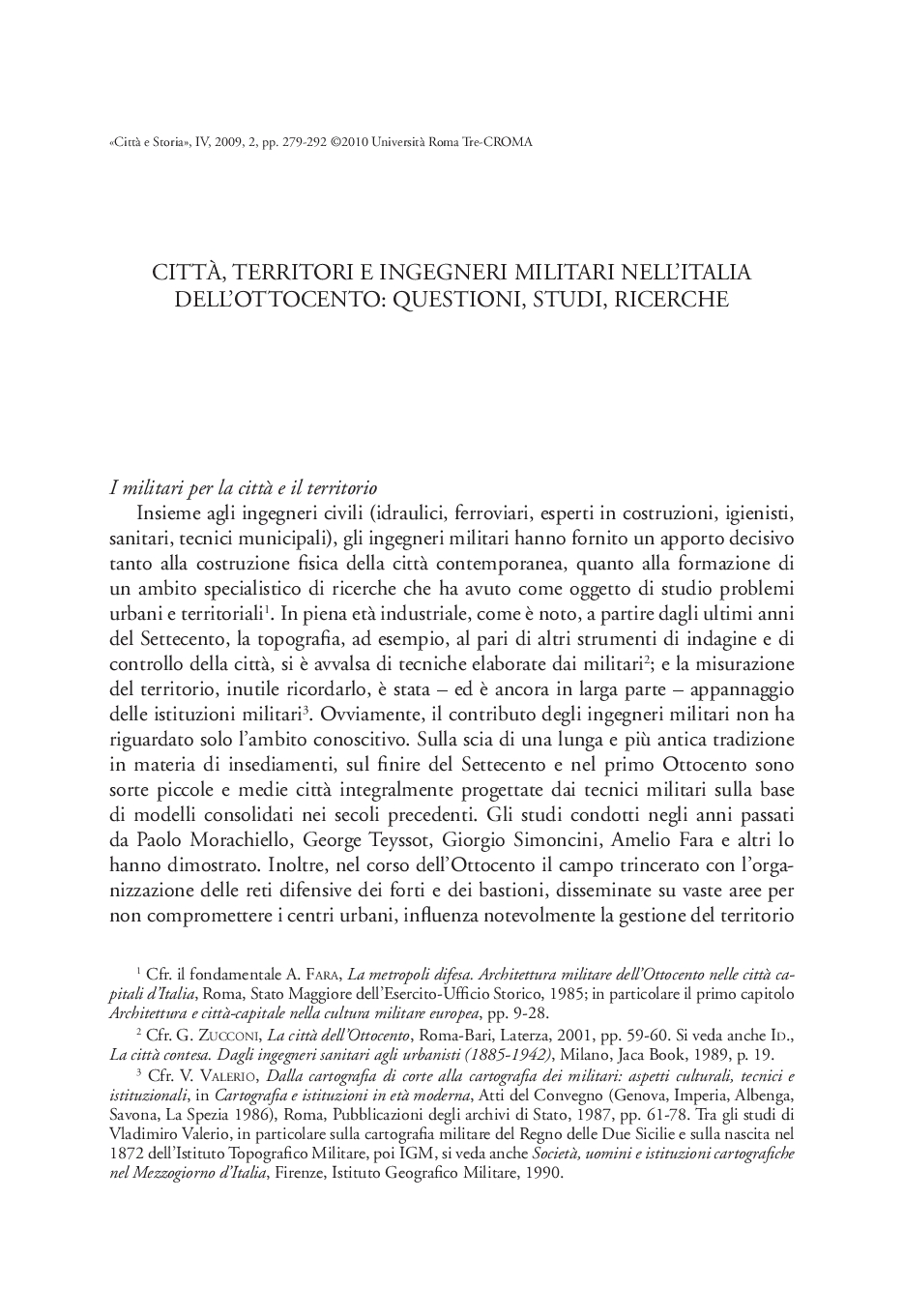Indice degli autori
CITTÀ & STORIA » 2009/2 » Spazi e cultura militare nella città dell'Ottocento
ISSN 1828-6364
Savorra Massimiliano
Città, territori e ingegneri militari nell'Italia dell'Ottocento: questioni, studi, ricerche
pp.279-292, DOI 10.17426/84806
Articoli
Abstract: Military engineers gave a decisive contribution to both the physical construction of the contemporary city, and the formation of a specialized area of research. Following a long and ancient tradition of settlements, at the end of the eighteenth and early nineteenth century, small and medium-sized cities were founded after being completely designed by military engineers on the basis of models established in previous centuries.
What emerged during the nineteenth century was the idea of «campo trincerato» with its network of strong and defensive ramparts. Such a model significantly influenced the planning of land constantly involved in the process of continuous transformation. Sometimes, military engineers’ work had a tremendous impact on the design of ports, roads and railways.
The following issues are taken into consideration: construction of military architecture and reutilization of suppressed monasteries; interaction of the city with the walls; transformation of ramparts, towers and moat; destruction of sections of the walls, but also of many building complex in order to create green areas and public promenades. The paper focuses on the status of the studies, suggesting an interpretation of many issues relating to the city of nineteenth century and its relation to military engineers.

Referenze
- download: n.d.
- Url: http://archivio.centroricercheroma.it/?contenuto=indice-degli-autori&idarticolo=893
- DOI: 10.17426/84806
- citazione: M. Savorra, Città, territori e ingegneri militari nell'Italia dell'Ottocento: questioni, studi, ricerche, "Città & Storia", IV/2, pp.279-292, DOI: 10.17426/84806

